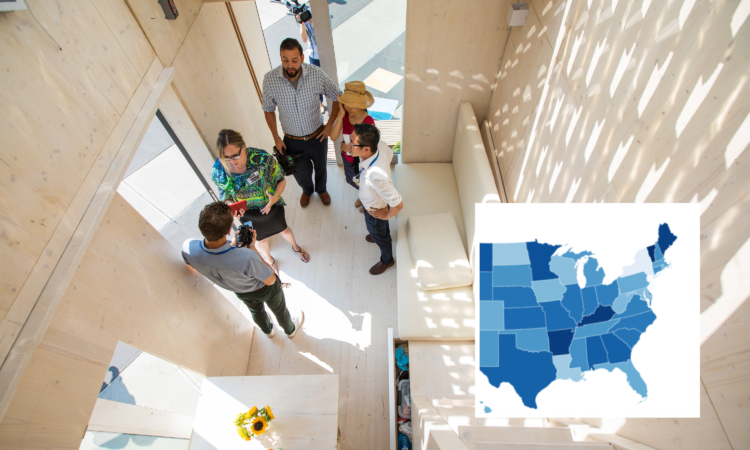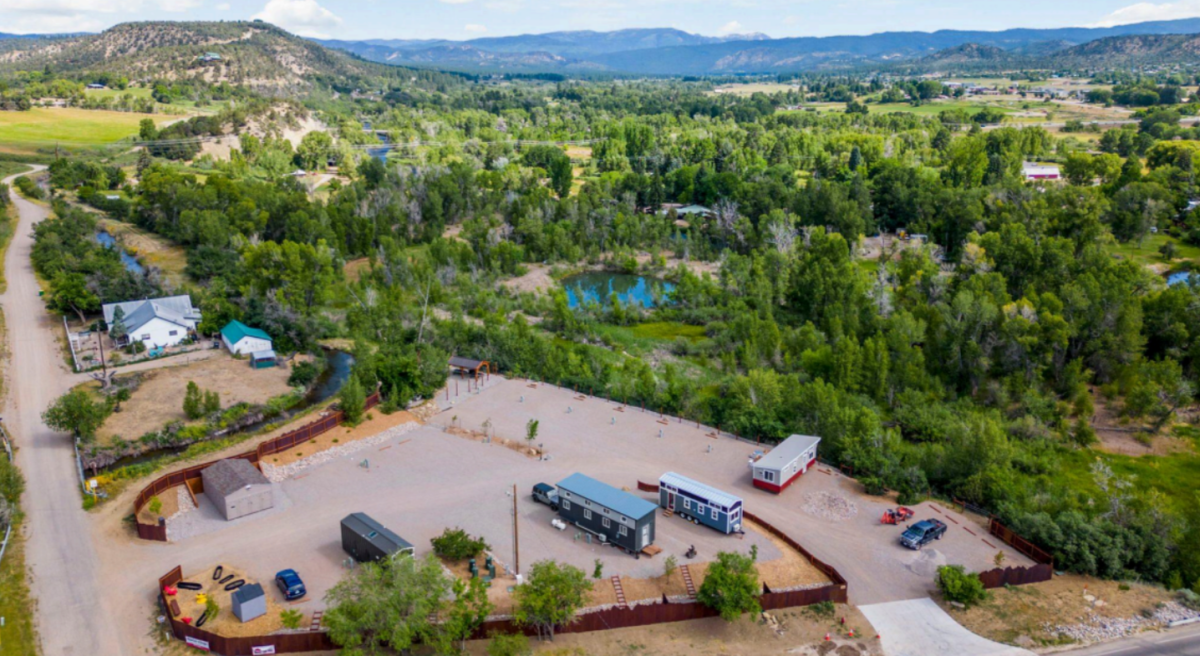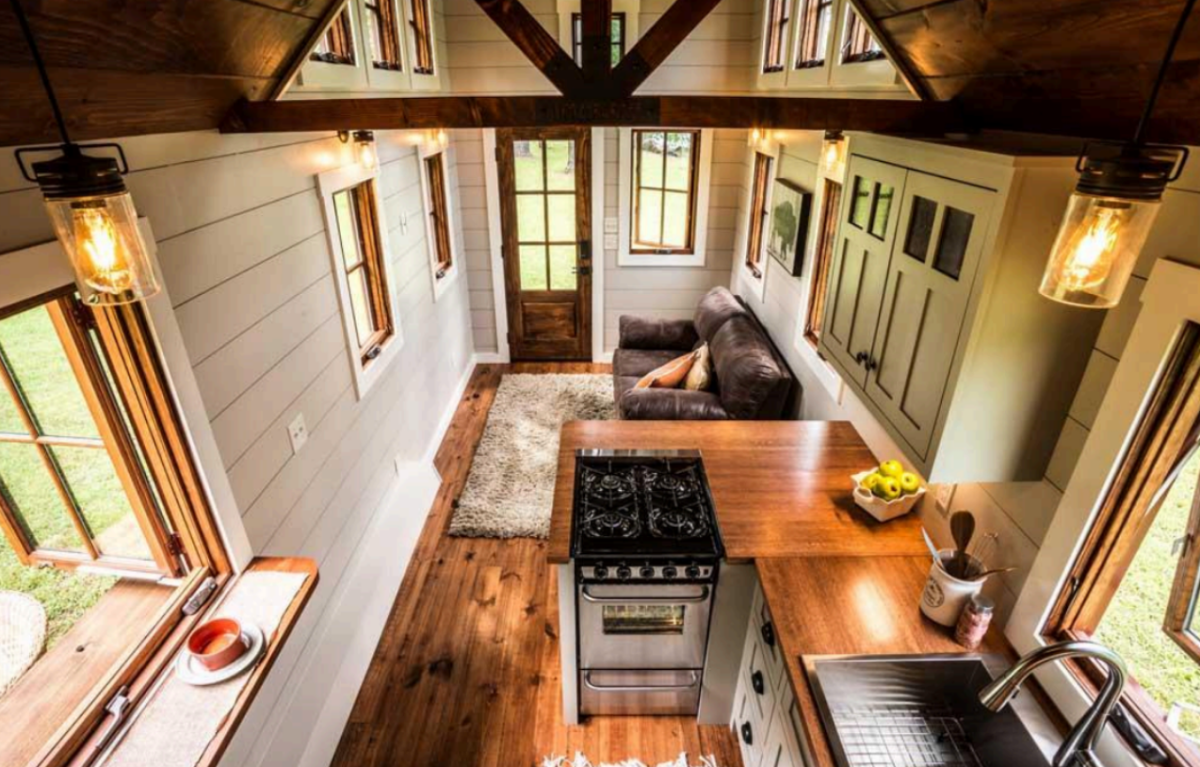
Looking to downsize? Like, really downsize? The tiny home movement in the U.S. has gained traction as people seek affordable, sustainable living options.
These small, efficient homes offer a minimalist lifestyle and a reduced environmental footprint. Communities and municipalities are increasingly recognizing the benefits, creating zoning laws and resources to support this innovative housing trend.
Landscaping services website LawnStarter recently ranked 2024’s Best States for Tiny House Living. The ranking compared the 50 states based on the ease of constructing a tiny home, the suitability of building in an urban setting based on average yard acreages, and the suitability for an off-grid lifestyle.
More From Newsweek Vault: Tiny House Financing Guide
Read on to find out more about tiny homes and where your state ranks on the list.

Michael Loccisano/Getty Images
What Is a Tiny Home?
A tiny home is a small, compact dwelling that typically measures between 100 and 400 square feet. These homes have gained popularity for their affordability, minimal environmental impact, and simplicity in living.
More From Newsweek Vault: Easiest Personal Loans to Get
The average size of a tiny home is about 225 square feet, making it roughly 10 times smaller than the average home in the U.S.
Tiny homes can be built on permanent foundations or trailers, allowing for mobility and flexibility in living arrangements. According to the International Residence Code, a tiny home is defined as a dwelling with 400 square feet or less in floor area, excluding lofts.
Newsweek spoke with Janet Thome, the founder and president of Tiny House Alliance USA.
“A lot of tiny house dwellers have a mindset that less is more,” she said. “They are choosing the tiny house lifestyle because they are often downsizing from a large house with an unaffordable mortgage, high utility bills, and endless upkeep and maintenance.”
Thome described the appeal of tiny living as “a much simpler life which is much more rewarding,” she added that tiny house owners “can spend more time with their loved ones, and even afford a vacation, or better yet, create a life they do not need a vacation from.”
Top 5 Close Up
- Vermont: Vermont takes the top spot with an overall score of 89.07. The state boasts favorable tiny house legality scores, ample yard acreage, and a supportive off-grid lifestyle environment.
- Kentucky: Kentucky ranks second with an overall score of 85.34, excelling in tiny house legality and off-grid lifestyle factors.
- Arkansas: With a score of 84.60, Arkansas offers a balanced environment for tiny house living, ranking high in average yard acreage and tiny house legality.
- Maine: Maine, with a score of 83.80, provides large average yard acreages and a supportive legal framework for tiny homes.
- Minnesota: Minnesota rounds out the top five with a score of 78.32, excelling in off-grid lifestyle suitability.
Key Insights
For best results, build your tiny house on the eastern half of America. States like Vermont, Arkansas, and Minnesota offer the most ideal conditions for compact dwellings. These top performers boast ample land for those looking to build in more crowded areas and great environments for self-reliant tiny-house dwellers preferring more remote settings.
Thome told Newsweek that “zoning changes have been the greatest contributing factor for the acceptance of tiny houses in states and local municipalities.” She explained that the movement has been spearheaded by the efforts of developers, advocates, manufacturers, legislators and owner builders and this has opened doors for the allowance of tiny houses.
However, not every state makes it easy to build tiny houses. States with various restrictions on tiny homes, such as Maryland and Nevada, occupy the bottom spots in the ranking. If not for the red tape, some of these states would make ideal candidates for tiny house living.
Thome also cited community acceptance as a crucial factor in the acceptance of tiny homes. She also added that tiny houses are a good option for those who are conscious of sustainability, stating that “the tiny house movement is known for attracting conscious individuals that buy non-toxic, reusable products, recycle, are concerned about decreasing their energy consumption, reducing waste, curtailing consumer spending on things they do not need, and being aware of their own contribution to the planet.”

MarLin Tiny home Village: Bayfield, Colorado
Behind the Ranking
The ranking considered several factors relevant to tiny house living: legality, space, and lifestyle. These categories encompassed factors like building codes, yard space, and off-grid living conditions. Scores were calculated based on these factors, with the highest overall scores determining the best states for tiny houses, according to LawnStarter.
Key Tiny House Facts
Interest in tiny homes is rising, especially among those concerned about the environmental impact of home construction and housing affordability.
There are about 10,000 tiny homes across the country, with the average price being $67,000, significantly cheaper than the average full-sized home, according to Ruby Home Luxury Real Estate.
Apart from the top five states highlighted, several others are notable for their tiny house-friendly environments. According to IPX1031, states like Georgia and Texas also rank highly due to their affordability, favorable housing laws, and climate conditions. Georgia, for instance, is known for its picturesque landscapes and mild climate, making it ideal for tiny house living.
While the tiny house movement continues to grow, it’s essential to consider state-specific regulations and conditions. Vermont, Kentucky, Arkansas, Maine, and Minnesota lead the pack, but other states like Georgia and California also provide excellent environments for tiny house living.

Photo Courtesy: Timbercraft Tiny Homes
What’s Next
Thome told Newsweek that “The tiny house industry has the potential to develop into its own unique industry, separate from other established industries.”
“The new tiny house industry standards developed by the American Society for Testing and Materials (ASTM) and the International Code Council (ICC) will create uniformity with the building officials, legislators, builders, and consumers, which will open the doors to financing, zoning as single family units on small lots, multiple units on one lot, pre-approved plans, expedited permitting, more tiny house communities, and finally the acceptance of tiny houses as a viable solution for housing, not a trend, a way of life,” Thome said.
Do you have a story Newsweek should be covering? Do you have any questions about this story? Contact LiveNews@newsweek.com.
